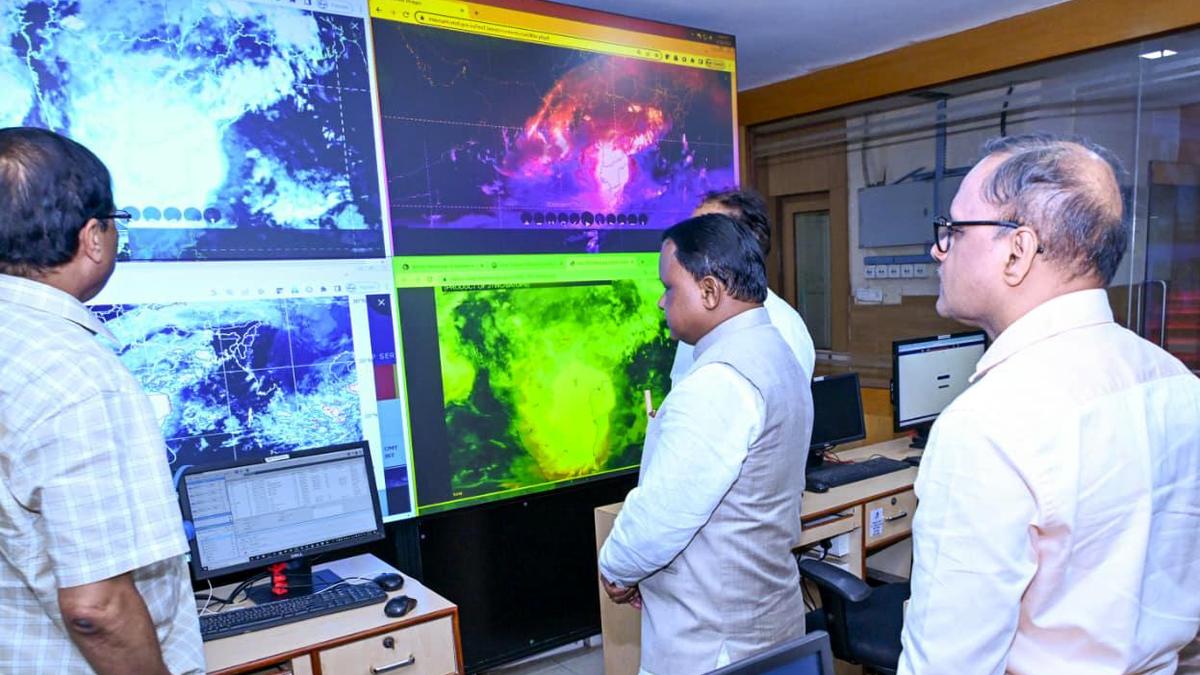05 November 2025 The Hindu Editorial
What to Read in The Hindu Editorial( Topic and Syllabus wise)
Editorial 1: Compound effect
Context
Scam factories in Southeast Asia demand a joint regional and global crackdown.
Introduction
The Supreme Court’s recent call for a comprehensive inquiry into the rise of digital scams exposes a growing cross-border criminal network exploiting Indian citizens. These scams, especially the “digital arrest” type, reveal not just cybercrime but a modern slavery system operating from Southeast Asia, where trafficked victims are forced to defraud others under violent coercion.
Supreme Court’s Concern
- The Supreme Court has ordered a full inquiry into the rise of digital scamsacross India.
- It highlighted the “digital arrest” scams, where fraudsters pose as police or officials to extort money.
- The Court noted the advanced and cross-border natureof these crimes.
Nature of the Scams
- These scams operate on an industrial scalefrom Southeast Asia, mainly Myanmar.
- Many “scam compounds” run in regions with little government control.
- Evidence suggests local regime supportand organized crime involvement.
Victim Exploitation
- Victims are tricked with fake job offerspromising high pay.
- They travel, often through Bangkok, using visa-free entry
- Once in Myanmar, they are traffickedto compounds run by Border Guard Forces.
- They face violence, torture, and abuse, forced to run scams like “pig butchering”(romance plus crypto fraud).
Role of Conflict and Laundering
- Myanmar’s civil warafter the 2021 coup helped these centres grow.
- Militias and junta-linked forces profit by taxing scam operations.
- Money moves through mulesand shady systems like Cambodia’s Huione Pay, then turns into cryptocurrency.
- Chinese crime syndicatesmanage these global networks.
Impact on India
- India suffers twice: its citizens are trafficked into scam labour, and others at home are cheated by scams.
- This creates a humanitarian and financial crisis.
Steps Needed
- The RBIand governments must run public awareness drives on digital frauds.
- Cybercrime unitsand digital policing should be strengthened.
- India must use diplomatic tieswith China, Thailand, Vietnam, and others to act against Myanmar and Cambodia.
- The United Nationsshould treat this as modern slavery and demand global action.
Conclusion
India faces a dual threat — its citizens are both victims and perpetrators under duress. Combating this menace needs strong cyber laws, public awareness, and international cooperation. By working with regional nations and the United Nations, India must push for dismantling these scam compounds, exposing this crisis as a human trafficking and digital slavery emergency demanding urgent global action.
Editorial 2: Lives saved, livelihoods lost
Context
Odisha’s toughest test starts after the storm passes.
Introduction
Building long-term resilience in Odisha demands shifting focus from disaster response to livelihood renewal. While life-saving systems have become efficient, economic recovery remains uneven. The goal now is to empower farmers, fishers, and smallholders with rapid insurance, accessible credit, and green protection—linking financial resiliencewith ecological stability to ensure communities thrive beyond each cyclone’s shadow.
Cyclone Montha’s Landfall and Immediate Impact
- Cyclone Monthahit the eastern coast on October 28, 2025, between Machilipatnam and Kalingapatnam near Kakinada in Andhra Pradesh.
- Wind speeds reached 100–110 kmph, moving inland through southern Odisha (Ganjam, Rayagada, Koraput)and parts of Telanganabefore weakening into a depression.
- The storm flattened fields, flooded villages, and displaced thousandswho took refuge in cyclone shelters.
- Agriculture and horticulturesuffered major losses across the affected belt.
Structural Vulnerability of Odisha
- Odisha’s 575-km coastlinelies in one of the six most cyclone-prone zones of the world.
- In the past century, nearly 260 cycloneshave hit the state — from the 1999 super-cyclone to Phailin (2013), Titli (2018), Fani (2019), and Yaas (2021).
- The 1999 super-cyclonecaused catastrophic loss of life and property, while Phailin alone led to ₹9,000 crore in damages, over one-fourth from agriculture and livestock.
- This history shows that Odisha’s exposure to tropical storms is chronic, not accidental.
Economic and Livelihood Fallout
- Immediate economic shocksinclude income loss for farmers, cash-flow crises for traders, and food supply disruptions in urban areas.
- After Cyclone Fani, a UNDP-led studyestimated:
- ₹3,000 crore damage to agriculture, livestock, and fisheries.
- Seven crore lost rural working days, worth nearly ₹2,700 crorein wages.
- Long-term distressfollows: farmers must repay loans and buy inputs; fishers must replace damaged boats and gear before insurance payments arrive.
- Informal enterprisesstay shut for months, credit tightens, and public funds are diverted from health, education, and infrastructure to reconstruction.
Disaster Management Success and Remaining Gaps
- The Odisha State Disaster Management Authority (OSDMA)has improved cyclone shelters, early warnings, and mass evacuations.
- Human casualties have drastically dropped —
- 1999 Super-cyclone:~10,000 deaths
- Phailin (2013):< 50 deaths
- Yaas (2021):only 2 deaths
- However, livelihood recoverylags behind: reconstruction focuses mainly on roads, housing, and power, leaving economic rehabilitation secondary.
- Ecological stressorslike saltwater intrusion, storm surges, and rising seas degrade soils and wetlands, forcing farmers toward low-yield crops or migration.
Building Long-term Resilience
- Livelihood recoverymust now match life-saving efficiency:
- Simplify and speed upcrop and fishery insurance claims.
- Provide emergency credit and short-term loan moratoriato prevent distress sales.
- Expand MGNREGSfor rebuilding embankments, ponds, and rural assets.
- Nature-based solutionsare key:
- Mangroves and wetlandsreduce wave energy by up to 90%, protecting coasts and sustaining incomes.
- Odisha’s mangrove restorationand climate-smart aquaculture (mud-crab farming, rice intensification) combine ecology with livelihoods.
- Financial reforms should include contingency funds, regional insurance pools, and direct transfersto smallholders and coastal communities.
Conclusion
Sustainable resilience is not built in cyclone shelters but in restored farms, revived fisheries, and rejuvenated ecosystems. By combining swift financial support with nature-based defences like mangroves and wetlands, Odisha can secure both livelihoods and landscapes. Integrating ecology, economy, and equity will transform recurring disasters into opportunities for climate adaptation and inclusive coastal development.
![]()


